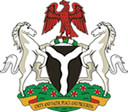Executive Summary
The projected population figure for Nigeria in 2022 was 216,783,381 comprising 108,350,410 males and 108,432,971 females. Data from the Central Bank of Nigeria shows that the United Kingdom ranked top among other countries in terms of inward flow of remittance with 12.36 billion US dollars in 2021, while the United States of America stood top in outward flows of remittance within the same period with 13.37 million US dollars. Benin Republic accounted for over half of the total rescued foreign victims of trafficking in Nigeria constituting 61.22% of the entire foreigners rescued in 2021. In addition, 28 offenders were arrested for procurement of persons for sexual exploitation between 2019 to 2021, ranking top among other offences.
The results of the Multiple Indicator Cluster Survey (MICS 6, 2021) indicate that Jigawa had the highest percentage of non-compliance to any method of contraceptive use stood at 93.0%, while Lagos had the lowest percentage at 54.7%. Total Fertility Rate (TFR) moved from 5.50 in 2013 to 5.14 in 2022. Furthermore, life expectancy at birth for males grew from 53.2 years in 2015 to 55.1 years in 2022, while life expectancy for females increased from 55.3 years in 2015 to 57.2 years in 2022. The total number of registrations and issuance of National Identification Numbers increased in 2021 to 27,052,148 from 5,017,806 in 2020 and 5,836,663 in 2019.
Data source: National Bureau of Statistics
INFOGRAPHICS



